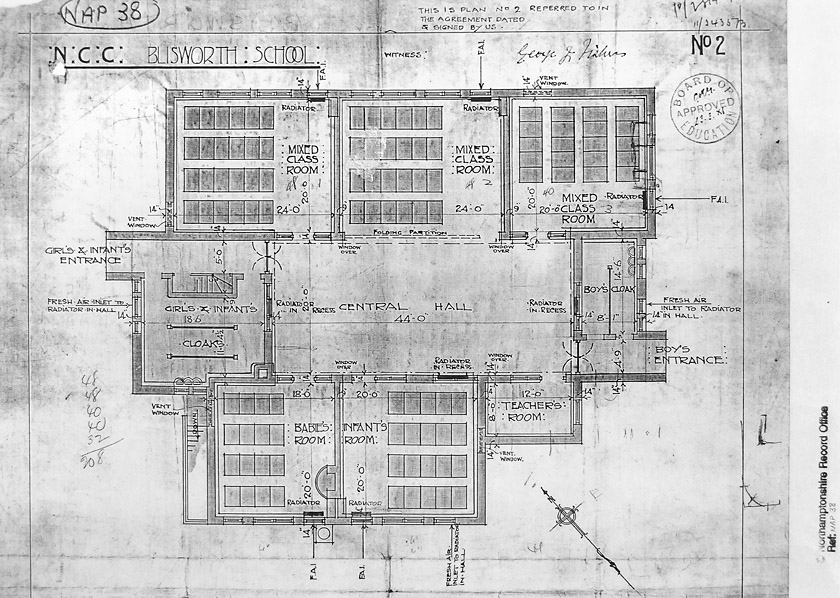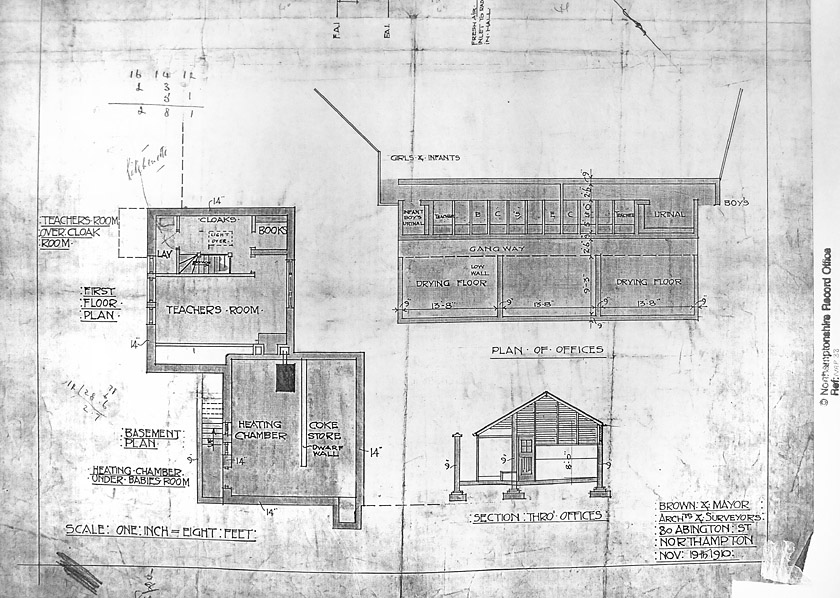|
Blisworth School Plans ex N.R.O. and "one village wardrobe!" The title hints at the sometimes strange way that historic items are uncovered. Be that as it may, the plans, comprising two A3 sheets, follow:
As is still perfectly discernable, the entrance on the left of this plan (for girls and infants) faces the main road and still carries over the portal the label "Girls and Infants". The other entrance now yields to a large square assembly hall that was built in the 1950s. The five classrooms are hardly modified and are still in use. There is one tiny teacher's room on the ground floor, probably for the headmaster. Note how heating and ventilation design was arranged at the turn of the 20 century; there is a low level fresh air vent associated with each radiator so that when the radiators are warm they cause fresh air to be drawn in for heating. Five classrooms does not seem enough. Children at 4 or less were the "babes" and infants were under seven years old. At the time, school children left school typically at 14 having spent about two years or so with each class.
What a revelation
this plan is! "Offices" are dry earth outside latrines and
there is a group for boys and for girls. They are raised from the
ground so that the "night collection cart" has access to
clearing out. A quite large area is described as a drying floor and,
at present, this is thought to be provided for drying out produce from the
garden, especially onions and root vegetables etc. The latrines were
probably connected to the sewers in 1928 and were provided with running
cold water for flushing (instead of bucketed water) in the 1950s.
The final picture is an aerial picture of the school with what appears to be a fine skittering of snow. When the school was first occupied in 1913, the summer brought news of various flying exploits, namely; the first voyages of the precursor to the RAF and the over flights of some explorers. Children would take the day off to try and follow what was going on - see school records. The date of this picture must be well after 1913 however. Judging from the absence of the new council houses on the Courteenhall Road (1935) the picture is thought to have been taken circa 1930. A neat pavement suggests a late date as does the presence of a few large telegraph/electricity poles. Across the top of the picture, left to right, is a triangular small orchard managed by the older children, a shed and the latrines and a long strip of gardens for growing vegetables managed by the older boys. The headmaster was forced to dig it up in the 1950s to give more space when the school was converted to a County Council Primary School and older children were not available to maintain the gardens. The orchard was retained and became an animal sanctuary in the 1960s. Of course, these days, we know the school as having received perhaps as many as four building additions to cope with the increased sophistication of modern teaching combined with greater numbers of children.
|


